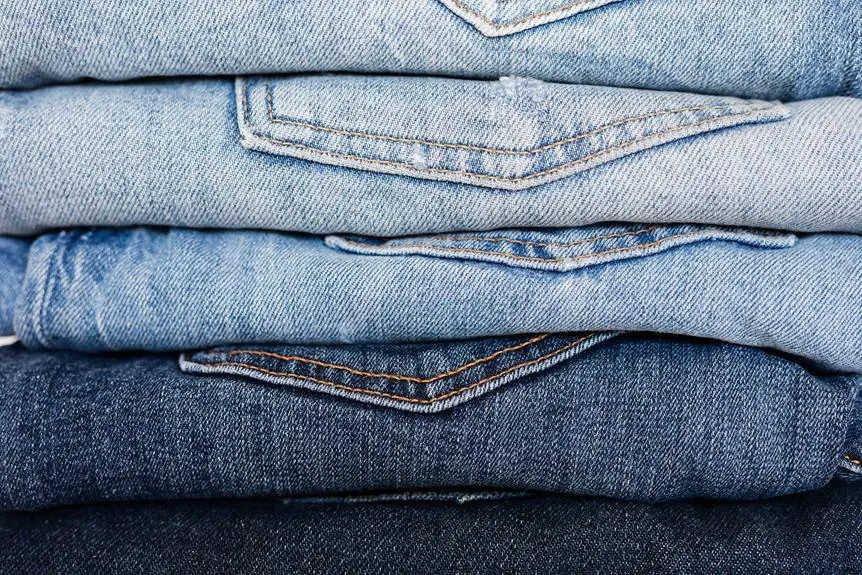Can calendering fabric improve its quality?
Understanding the impact of calendering on fabric properties is crucial for mastering the art of fabric production.
This process influences the smoothness, luster, density, and strength of the fabric, ultimately affecting its overall quality.
By evaluating the changes in fabric properties brought about by calendering, one can assess the potential for improvement in fabric quality.
In this brief exploration, we will delve into the effects of calendering on fabric and consider whether this process can indeed enhance the quality of the final product.
Key Takeaways
- Calendering enhances fabric smoothness and luster, improving its appearance and texture.
- Calendering increases fabric density and compacts fibers, resulting in improved fabric strength and durability.
- Evaluating changes in fabric properties, such as tensile strength and flexibility, provides insights into the effectiveness of calendering.
- Calendering can lead to overall quality improvement, including cost savings and higher customer satisfaction, by reducing friction, wear, and increasing long-term performance.
Understanding Calendering Process
When you understand the calendering process, you can recognize its potential to improve fabric quality. Fabric finishing through calendering involves the compression of the fabric between rollers to create a smoother and more polished surface. This process enhances the fabric's appearance and texture, making it more appealing to consumers. Understanding the intricacies of calendering allows you to manipulate the fabric's surface properties, such as its luster, smoothness, and evenness, to meet specific quality standards.
Calendering is a critical step in fabric finishing as it significantly impacts the final product's characteristics. By comprehending this process, you gain the ability to control the fabric's surface enhancement, ensuring that it meets the desired specifications. Understanding the calendering process empowers you to make informed decisions about the type of rollers, pressure, temperature, and speed required to achieve the desired fabric quality.
Additionally, knowledge of calendering enables you to troubleshoot any issues that may arise during the surface enhancement process, ensuring consistent and high-quality fabric output.
Impact on Fabric Smoothness and Luster
To improve fabric quality through calendering, you can manipulate the fabric's smoothness and luster, enhancing its appearance and appeal to consumers. Calendering, a fabric finishing process, can significantly impact fabric texture and surface finish. By subjecting the fabric to high pressure and friction, calendering can alter the surface properties, resulting in a smoother and shinier appearance. The table below illustrates the potential impact of calendering on fabric smoothness and luster.
| Type of Fabric | Smoothness | Luster |
|---|---|---|
| Cotton | Increased | Increased |
| Polyester | Enhanced | Enhanced |
| Silk | Improved | Heightened |
The calendering process can effectively improve the fabric texture, making it feel softer and more luxurious to the touch. Additionally, the surface finish of the fabric becomes more reflective, enhancing its visual appeal. These alterations to the fabric's properties contribute to a higher-quality end product, making it more desirable to consumers who appreciate superior fabric characteristics.
Influence on Fabric Density and Strength
Calendering fabric can significantly impact the density and strength of the material, enhancing its overall quality and durability. Fabric density refers to the closeness of fibers in the fabric, which can be influenced by the calendering process. Calendering can compact the fibers, increasing the fabric density and consequently improving its strength. By reducing the air pockets between fibers, calendering enhances the fabric's resistance to tearing and wearing, thus contributing to its durability.
In textile engineering, fabric durability is a crucial aspect in determining the quality of the material. Calendering, through its ability to enhance fabric density and strength, plays a pivotal role in improving fabric durability. A denser and stronger fabric is less prone to damage and deformation, making it more resilient to the stresses of everyday use. Additionally, the increased strength resulting from calendering can also contribute to the longevity of the fabric, ensuring that it maintains its quality over time.
Evaluating Changes in Fabric Properties
By evaluating specific changes in fabric properties, you can gain insights into the impact of calendering on fabric quality. Fabric properties encompass a range of characteristics, such as tensile strength, flexibility, and surface smoothness, that are crucial for determining the overall quality and performance of the fabric. When assessing these properties, it's important to consider the influence of manufacturing techniques, including calendering, on the fabric's behavior and functionality.
Key Considerations for Evaluating Changes in Fabric Properties:
- Tensile Strength: Evaluate how calendering affects the fabric's ability to withstand tension and stretching forces.
- Flexibility: Assess the fabric's flexibility and drape after undergoing calendering to understand any changes in its behavior.
- Surface Smoothness: Examine the impact of calendering on the fabric's surface texture and smoothness, which can affect its visual appeal and tactile properties.
Understanding these changes in fabric properties through rigorous evaluation provides valuable insights into the effectiveness of calendering in enhancing fabric quality. This knowledge can guide manufacturers in optimizing their calendering processes to achieve the desired fabric characteristics.
Assessing the Overall Quality Improvement
You can evaluate the overall quality improvement of calendered fabric by examining its enhanced tensile strength, flexibility, and surface smoothness.
The calendering process compresses the fabric, increasing its density and improving tensile strength, which is crucial for durability and longevity.
Additionally, the improved flexibility of the fabric allows for greater ease of movement and comfort, making it more appealing for various applications.
The enhanced surface smoothness not only gives the fabric a sleek appearance but also contributes to its overall quality by reducing friction and wear.
Assessing the overall effectiveness of calendering fabric involves considering the long-term benefits it offers.
By enhancing tensile strength, flexibility, and surface smoothness, calendering improves the fabric's performance and lifespan, making it more durable and resistant to wear and tear.
These long-term benefits can result in cost savings and higher customer satisfaction due to the fabric's extended usability and improved quality.
Ultimately, evaluating the overall quality improvement of calendered fabric involves measuring the impact of these enhancements on its performance and durability over time.
Frequently Asked Questions
Can Calendering Fabric Affect the Fabric's Ability to Resist Wrinkles and Creases?
Calendering fabric can significantly improve fabric durability and enhance wrinkle resistance. The process compresses the fibers, creating a smooth and flat surface that reduces the fabric's propensity to wrinkle or crease, resulting in a higher-quality material.
Does the Calendering Process Have Any Impact on the Fabric's Ability to Repel Water or Other Liquids?
Calendering can impact fabric breathability and durability. The process can reduce the fabric's ability to repel water, affecting its performance in wet conditions. Additionally, calendering can enhance fabric durability, increasing its resistance to wear and tear.
How Does Calendering Fabric Affect the Fabric's Ability to Retain Heat or Insulate?
Calendering fabric can enhance its ability to retain heat and provide insulation. The process compresses the fibers, reducing air pockets and increasing density. This improves thermal performance, making the fabric better at trapping warmth and insulating.
Can Calendering Fabric Affect the Fabric's Susceptibility to Fading or Color Retention?
To improve fabric durability and color vibrancy, calendering fabric can be effective. It can increase the fabric's resistance to fading and help maintain its original color, making it a valuable process for enhancing fabric quality.
Does the Calendering Process Have Any Influence on the Fabric's Static Electricity Resistance?
Calendering fabric can improve its quality by enhancing conductivity and durability. The process reduces static electricity resistance, making the fabric more durable and improving its ability to conduct electricity.
- Fabrics and Their Role in Wellness and Comfort - July 22, 2024
- Choosing Safe Fabrics for Baby Clothes - July 22, 2024
- Impact of Fabrics on Skin Health - July 22, 2024






